Few sectors, if any, have been subject to as much sweeping change – and strain – as health and social care. The recent report by Lord Darzi into the NHS in England found that the health service is in “critical condition” and needs urgent reform in order to survive.
Central to the report is the need to shift care to the left – away from hospitals and into home and community settings. Embracing technology also features strongly, with Darzi highlighting how the NHS needs to undertake a major tilt towards technology to unlock productivity.
In particular, Darzi points out how the hundreds of thousands of NHS staff working outside hospitals urgently need the benefits of digital systems, and how there is enormous potential in AI to transform care.
Despite significant progress in the NHS’s digital transformation, particularly in the wake of the Covid-19 pandemic, a lack of digitisation and connectivity still exists within the sector and is far from the only challenge it faces.
The UK’s ageing population and rises in complex comorbidities mean more than 70% of the NHS budget has been used for long-term condition management. In social care too, demand for services is increasing, along with pressures on budgets and significant concerns around recruitment and digital skills.
Enabling more inclusive, accessible care
Technology can play a significant role in tackling these challenges, and helping facilitate more inclusive, accessible care for all. Key to enabling this are robust, secure advanced connectivity solutions, such as 5G.
5G’s increased bandwidth and reduced latency supports multiple technologies and services at the same time, over the same network. For the NHS, video streaming and the sharing of medical imagery in real-time enables long distance consultations, training, collaboration and support – driving efficiency, reducing costs and pollution associated with travel, and ensuring patients are seen in a timely and equitable manner, in an environment that suits them best.
Advanced connectivity solutions can also help the NHS improve its estate management, with the health service accounting for about 40% of all public sector emissions in the UK. Leveraging 4G and 5G to deploy energy monitoring sensors, occupancy sensors and smart lighting can help the NHS better manage and significantly reduce its power consumption, in turn helping optimise its energy usage and cut costs accordingly.
In social care, 4G and 5G connectivity supports sensors that can be used by care workers to monitor wellbeing and health in the community for both patients, carers and the vulnerable. This ensures essential services can not only continue as 2G, 3G and analogue connectivity is phased out, but also be expanded to support medication adherence, predictive monitoring and tools to tackle social isolation and loneliness.
Overall, advanced connectivity solutions will support a broad-scale health and social care service innovation, as services shift from treatment settings towards a more distributed, preventative-focused model of care.
Increasing connectivity for all
5G is a dynamic, scalable network platform that adds connectivity to health and social care networks, easily connecting complex sites, third-party organisations and remote medical and care workers, while providing the reliable connectivity required for telehealth and telecare services.
5G also enables essential integration and cross-department interoperability, connecting small and medium-sized private providers and the interwoven layers of specialisms that make up the NHS and social care.
Furthermore, some health and social care applications, such as monitoring in the home, need service-level agreements that would be cost prohibitive or unavailable under commercial agreements. Deploying private 4G or 5G networks, either within hospital settings or communities, can make services accessible to all, and offer a more affordable alternative to high bandwidth charges over commercial networks. Such an approach has been pioneered by Liverpool 5G which deployed a 5G network in Kensington, one of the most socially deprived parts of the city.
The real world impact of joined-up digital healthcare
One example of just how important connectivity is in enabling a shift from reactive to preventative care can be seen in Plymouth, where Plymouth Community Homes, Plymouth’s largest social housing landlord, is working closely with integrated health and social care specialists at Livewell Southwest, and the Centre for Health Technology, to develop the UK’s largest community living lab.
The living lab setup brings together industry, academia, health and social care, and citizens and local authorities, funded by Cisco’s Country Digital Acceleration program. In doing so, it lets them explore not just tech propositions and how they might work in theory, but how these ideas actually fare when rolled out in the real world and whether they are ready for adoption and scale.
These tech propositions include sensors, which can be used to tell if a dementia patient has been trying to leave the house in the middle of the night; wearables, which can detect if a person has fallen; and electricity usage data, which could show for example whether an older resident hasn’t been using their fridge or oven as often as they might usually, which could be a sign of reduced appetite, and something worth checking on.
Such technologies, powered by connectivity solutions, are helping people stay safer, happier and more independent, as well as reduce the burden on stretched carers, supporting them to work smarter and enabling the delivery of person-centred care when it’s needed, even in the face of staff shortages. With the help of advanced connectivity, this new generation of solutions can help safeguard our existing social care services and build on the critical work already being done by the sector.










